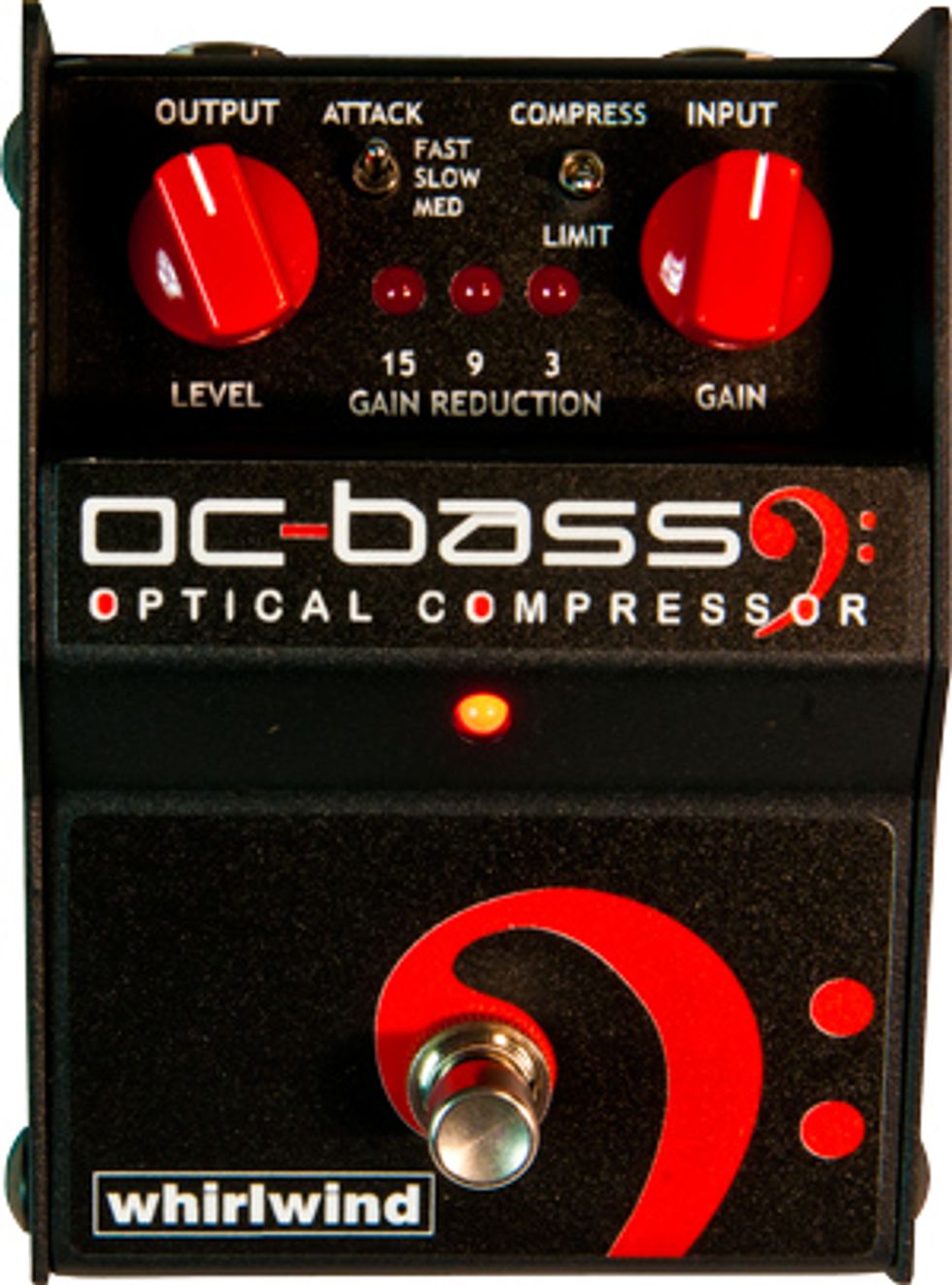
A not-so-well-kept secret for bassists is that compression is pretty much a mast-have staple for rock performances and recordings. For the uninitiated, a here’s why: A compressor evens out a signal and provides a more consistent attack. In fact, if you play out live much, you’re probably already being compressed by the FOH engineer every time you play live whether you know it or not. Yes, compression is one of those things you can get away without using, but life is so much better with it.
Having the distinction of offering the first commercially available DI back in 1979, Whirlwind has long been a major behind-the-scenes type of company in the music industry. For the past 35 years, they’ve been manufacturing all the things that we need to make a show run, but don’t often think about. And their lines of snakes, cables, panels, DIs, and fiber optics have been staples in every kind of live venue—from the smallest beer joint to major sports stadiums. Lately, however, Whirlwind has been moving from side stage to center stage with an array of stompboxes for guitar and bass, most recently with the OC Bass.
You Light up My Life
The OC Bass pedal has all the characteristics of other Whirlwind products: It’s rugged, attractive, and built to withstand the rigors of the road. Housed in a solidly built steel chassis, it sports a pair of classic knobs and a pair of mini toggles that are smartly arranged and tucked away to prevent accidental adjustments. It’s a smart design, and other manufacturers should take note.
Firing up the OC with the provided 18V power supply, I was instantly drawn to the control panel’s red LEDs, which indicate the level of compression. Though I was initially a little distracted by the lights dancing across the pedal, this shouldn’t present a problem for most players unless they inexplicably hover over one pedal and stare at the floor.
Plugging my trusty, vintage Music Man StingRay into the pedal’s input (which is located on the rear panel) and then into my Eden WT550 Traveler driving a 610XLT cab, I was ready to put the OC Bass through its paces. Because the pedal is a compressor at its core, I started there by flipping the mini toggle to compressor, dialing the output and input levels to 12 o’clock, and setting the attack switch to fast.
From the moment I set the attack switch (which operates very smoothly and unswitch-like), I was blown away. The fast ratio was perfect for a heavy-handed session, and it harnessed my beast of a StingRay by smoothing out the hard hits I gave it. And yet the OC Bass allowed the instrument to breathe and didn’t make it sound ultra-squashed, which is why so many people shy away from compression. When I switched the attack setting to slow, the sustain aspect of the pedal kicked in, and again, the pedal maintained tonal integrity while keeping the peaks at bay and letting me hold a note until breakfast.
Ratings
Pros:
Easy to dial in. Great tones at a great price.
Cons:
Dancing LEDs can be distracting.
Tones:
Ease of Use:
Build:
Value:
Street:
$199
Whirlwind USA
whirlwindusa.com
The attack switch sets the mode, but the input control is the real scene-stealer here: It dictates how much compressor or limiter is applied to the bass signal. You can go from barely there to wonderfully enhanced with a quick turn of the dial, and that’s what really gives the OC Bass its mojo. Well, almost all of it.
Limit This!
Flipping the mini toggle from compress to limit, and then adjusting input level takes the tone to a more funk-ready place—squashing the signal into submission, if desired, for that wicked 16th-note run. Combined with the fast attack, the limiter setting provides a noticeably more contained tone and allows you to hit your bass as hard as you want while keeping your signal from ticking off the rest of the stage (and house). Switching to slow attack lets the bass breathe a bit better, and for my money, it’s the best of the three settings. The medium attack is naturally cradled in-between, and will work well for someone needing added sustain and a governor over their attack.
The Verdict
Though many bass amps are equipped with onboard compression of some kind these days, they generally lack the attributes of a high-end studio compressor. The OC Bass offers flexibility that built-in compressors simply don’t, and the straightforward controls take a lot of guesswork out of the process—with the ease of pedalboard access to boot. Compression may not be as flashy or fun as other effects, but when it comes to keeping things even, this pedal has all the right moves. The folks at Whirlwind have figured out a way to provide high-quality features in a road-ready package and at a friendly price. All good things if you ask me.







![Rig Rundown: Russian Circles’ Mike Sullivan [2025]](https://www.premierguitar.com/media-library/youtube.jpg?id=62303631&width=1245&height=700&quality=70&coordinates=0%2C0%2C0%2C0)

















